Edit Based on this post, a better solution than my previous one might be:
import matplotlib.pylab as pl
import matplotlib
import numpy as np
pl.close('all')
x = np.linspace(0.019, 0.021, 4)
y = np.linspace(0.09, 0.10, 4)
s = np.random.randint(10, 200, 4)
fig = pl.figure()
ax1=pl.subplot(121)
pl.scatter(x, y, s=s)
pl.xlim(0.01, 0.04)
pl.ylim(0.04, 0.12)
pl.xticks([0.01,0.02,0.03,0.04])
pl.yticks([0.04,0.06,0.08,0.10,0.12])
ax2=pl.subplot(122)
pl.scatter(x, y, s=s)
pl.xlim(0.018, 0.022)
pl.ylim(0.08, 0.11)
pl.xticks([0.018,0.020,0.022])
pl.yticks([0.08,0.095,0.11])
transFigure = fig.transFigure.inverted()
for i in range(x.size):
xy1 = transFigure.transform(ax1.transData.transform([x[i],y[i]]))
xy2 = transFigure.transform(ax2.transData.transform([x[i],y[i]]))
line = matplotlib.lines.Line2D((xy1[0],xy2[0]),(xy1[1],xy2[1]),
transform=fig.transFigure)
fig.lines.append(line)

The other (old) solution:
Interesting question. I came up with the "solution" below (although it ain't pretty...); it does an ax.transData.transform from the data coordinates to figure coordinates, and uses ax.annote to draw the arrows, but this solution unfortunately only works if you keep the figure dpi (dots per inch) equal to the figure ppi (points per inch).
If I can think of a better solution, I'll post it here.
import matplotlib.pylab as pl
import numpy as np
x = np.linspace(0.019, 0.021, 4)
y = np.linspace(0.09, 0.10, 4)
s = np.random.randint(10, 200, 4)
# Transform the data coordinates to figure (pixel) coordinates
def get_display_coordinates(x,y):
ax = pl.gca()
xd = np.zeros_like(x)
yd = np.zeros_like(y)
for i in range(x.size):
xd[i], yd[i] = ax.transData.transform([x[i], y[i]])
return xd, yd
pl.figure(dpi=72)
ax=pl.subplot(121)
sc=pl.scatter(x, y, s=s)
pl.xlim(0.01, 0.04)
pl.ylim(0.04, 0.12)
pl.xticks([0.01,0.02,0.03,0.04])
pl.yticks([0.04,0.06,0.08,0.10,0.12])
xd_1, yd_1 = get_display_coordinates(x,y)
ax=pl.subplot(122)
pl.scatter(x, y, s=s)
pl.xlim(0.018, 0.022)
pl.ylim(0.08, 0.11)
pl.xticks([0.018,0.020,0.022])
pl.yticks([0.08,0.095,0.11])
xd_2, yd_2 = get_display_coordinates(x,y)
for i in range(x.size):
ax.annotate("",
xy=(xd_2[i], yd_2[i]), xycoords='figure pixels',
xytext=(xd_1[i], yd_1[i]), textcoords='figure pixels',
arrowprops=dict(arrowstyle="->", connectionstyle="arc3"))
pl.savefig('test.png', dpi=72)




